
Browse an alphabetical list of photographs. These historical images portray people, places, and events before, during, and after World War II and the Holocaust.
<< Previous | Displaying results 76-100 of 125 for "Photo" | Next >>
Joseph Levi, a pharmacist and the head of the Jewish community of Komotine, wearing the compulsory Jewish badge. Bulgarian occupation authorities later deported him to the Treblinka killing center. Komotine, Greece, 1942.
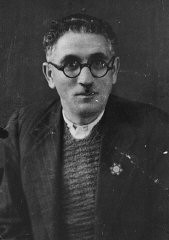
Soon after liberation, women camp survivors prepare food near piles of dead bodies. Bergen-Belsen, Germany, after April 15, 1945.
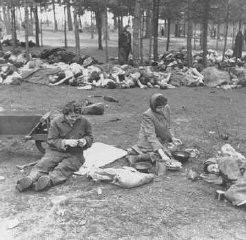
Prisoners receive meager food allocations at the Plaszow camp. Krakow, Poland, 1943 or 1944.
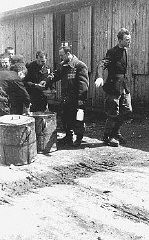
Forced laborers work on the construction of a wall around the Warsaw ghetto area. The Germans announced the construction of a ghetto in October 1940 and closed the ghetto off from the rest of Warsaw in mid-November 1940.
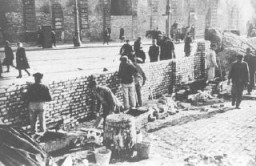
View of the dam being built by forced laborers from the Im Fout labor camp in Morocco. Photograph taken 1941-42.
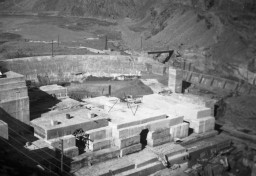
View during the construction of Oskar Schindler's armaments factory in Bruennlitz. This photograph shows the construction of a rail line to the factory. Czechoslovakia, October 1944.
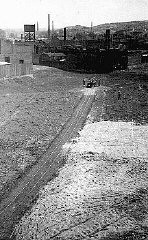
Installation of the railcar at the construction site of the United States Holocaust Memorial Museum. Washington, DC, February 9, 1991.
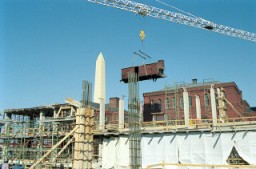
Containers of Zyklon B poison gas pellets found at the Majdanek camp after liberation. Poland, after July 22, 1944.
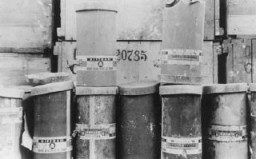
Portrait of Secretary of State Cordell Hull signing President Franklin D. Roosevelt's neutrality proclamation. September 5, 1939.
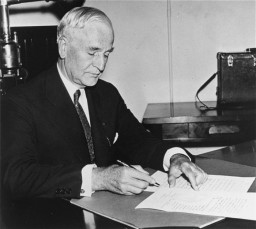
Corpses found by US soldiers after the liberation of the Gunskirchen camp, a subcamp of the Mauthausen concentration camp. Austria, after May 5, 1945.
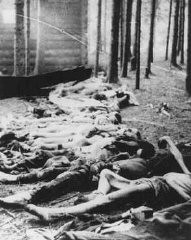
Corpses found when US troops liberated the Gusen camp, a subcamp of the Mauthausen concentration camp. Austria, after May 12, 1945.
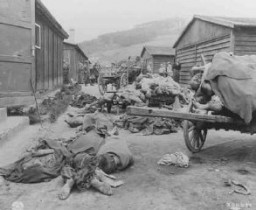
A pile of corpses in the newly liberated Dachau concentration camp. Dachau, Germany, April 29-May 1945. This image is among the commonly reproduced and distributed, and often extremely graphic, images of liberation. These photographs provided powerful documentation of the crimes of the Nazi era.
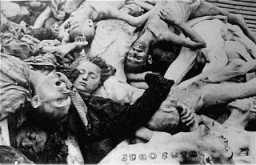
Piles of corpses, soon after the liberation of the Mauthausen camp. Austria, after May 5, 1945.
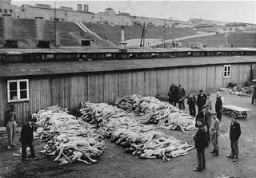
Corpses are piled in the crematorium mortuary in the newly liberated Dachau concentration camp. Dachau, Germany, May 1945. This image is among the commonly reproduced and distributed, and often extremely graphic, images of liberation. These photographs provided powerful documentation of the crimes of the Nazi era.
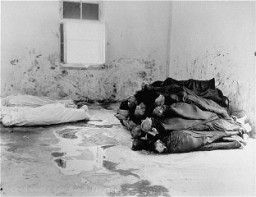
Corpses of inmates from the Klooga camp stacked for burning. Soviet troops discovered the bodies when they liberated the camp. Estonia, September 1944.
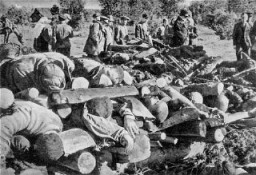
Corpses of inmates from the Klooga camp stacked for burning. Soviet troops discovered the bodies when they liberated the camp. Estonia, September 1944.
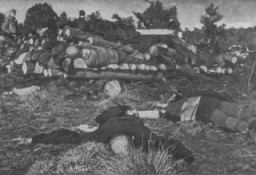
Corpses of prisoners killed in the Gunskirchen camp. Gunskirchen was one of the many subcamps of the Mauthausen camp. It was liberated by US forces in early May 1945. Gunskirchen, Austria, photo taken between May 6 and May 15, 1945.
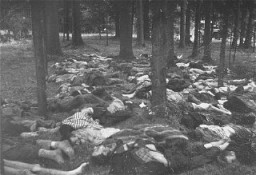
Corpses of inmates discovered by Soviet troops at the Klooga forced-labor camp. Nazi guards and Estonian collaborators had executed the prisoners and then stacked the bodies for burning. Estonia, September 1944.

American radio journalists view corpses in the Buchenwald concentration camp. This photograph was taken after the liberation of the camp. Germany, April 18, 1945. Pictured from left to right are, Lowell Thomas (NBC); Howard Barnes (WOR); and George Hamilton Combs (WHN).
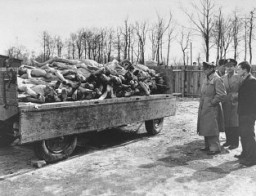
A counterfeit British bank note produced by Jewish forced laborers employed in Operation Bernhard at the Sachsenhausen concentration camp. Under an order issued by SS chief Heinrich Himmler in 1942, Operation Bernhard initially aimed to produce large quantities of counterfeit British bank notes. The goal was to flood the British currency market and trigger a financial crisis.
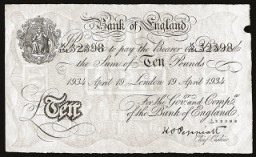
Three couples pose with their babies in the Gabersee displaced persons (DP) camp in Germany, 1947. In the center are David and Bella Perl (later spelled Pearl), who met and married after the war, with their daughter, Rachel. During the Holocaust, Bella Scheiner and her family were deported to Auschwitz. From there, she was sent to forced labor at Reichenbach, a sub-camp of Gross-Rosen. Bella met David—who had lost his wife and child during the war—while working at a photography studio after…
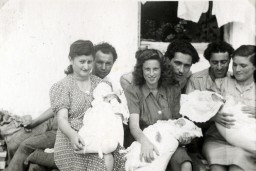
View of the courtroom during the Dachau concentration camp trial. November 15-December 13, 1945.
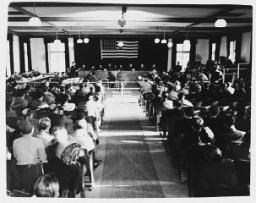
View of the courtyard in the Breendonk fortress prison where prisoners lined up for roll call. Breendonk, Belgium, postwar. This image is taken from a series of snapshots sold on the site after the end of World War II.
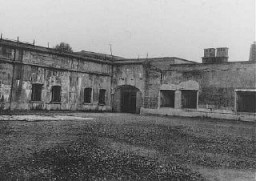
Cover of Ernest Hemingway's A Farewell to Arms. (1929 cover. Princeton University Library.) In 1933, Nazi students at more than 30 German universities pillaged libraries in search of books they considered to be "un-German." Among the literary and political writings they threw into the flames during the book burning were the works of Ernest Hemingway.
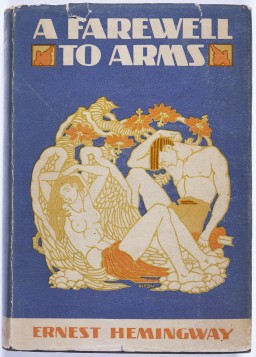
Cover of a German antisemitic book for children, Der Giftpilz (The Poisonous Mushroom), published in Germany by Der Stuermer-Verlag.
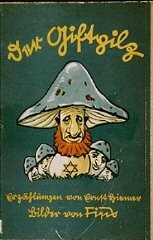
We would like to thank Crown Family Philanthropies, Abe and Ida Cooper Foundation, the Claims Conference, EVZ, and BMF for supporting the ongoing work to create content and resources for the Holocaust Encyclopedia. View the list of donor acknowledgement.